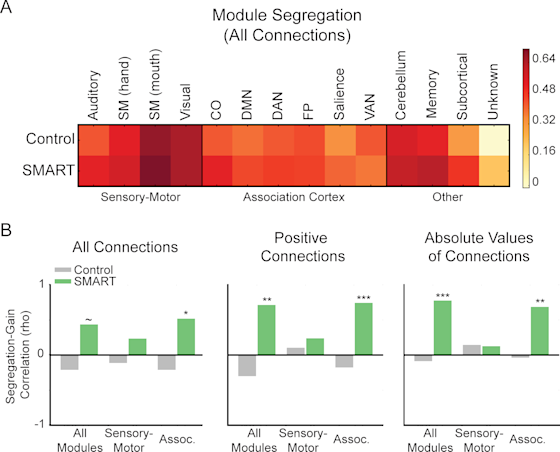OVERVIEW
Attention, cognitive control and memory are some of the functions associated with age-related decline. This study explores the impact of cognitive training interventions to help mitigate deficits and improve functioning in older adults. Researchers investigated the relationship between brain networks at baseline and and post-training, finding that brain modularity, or the degree to which functional brain networks are organized into subnetworks, plays a measurable role in post-training improvements. These results suggest ways in which assessments of brain networks can be used as a biomarker to guide cognitive interventions and improve outcomes, while also indicating how properties of brain networks may capture individual differences in learning and neuroplasticity.
Figure 5. Relationship between module segregation and cognitive changes after SMART. (A) Module segregation for the Control and SMART groups. (B) Correlation between module segregation (all modules, sensory-motor modules, and association cortex modules) and change in performance on the TOSL. Correlations were performed using all network connections (left), only positive network connections (middle), and the absolute values of connections (right). SM, somatomotor; CO, cingulo-opercular; DMN, default mode network; DAN, dorsal attention network; FP, fronto-parietal, VAN, ventral attention network, Assoc., association cortex. ~P ≤ 0.10, *P ≤ 0.05, **P ≤ 0.01, ***P ≤ 0.001.





